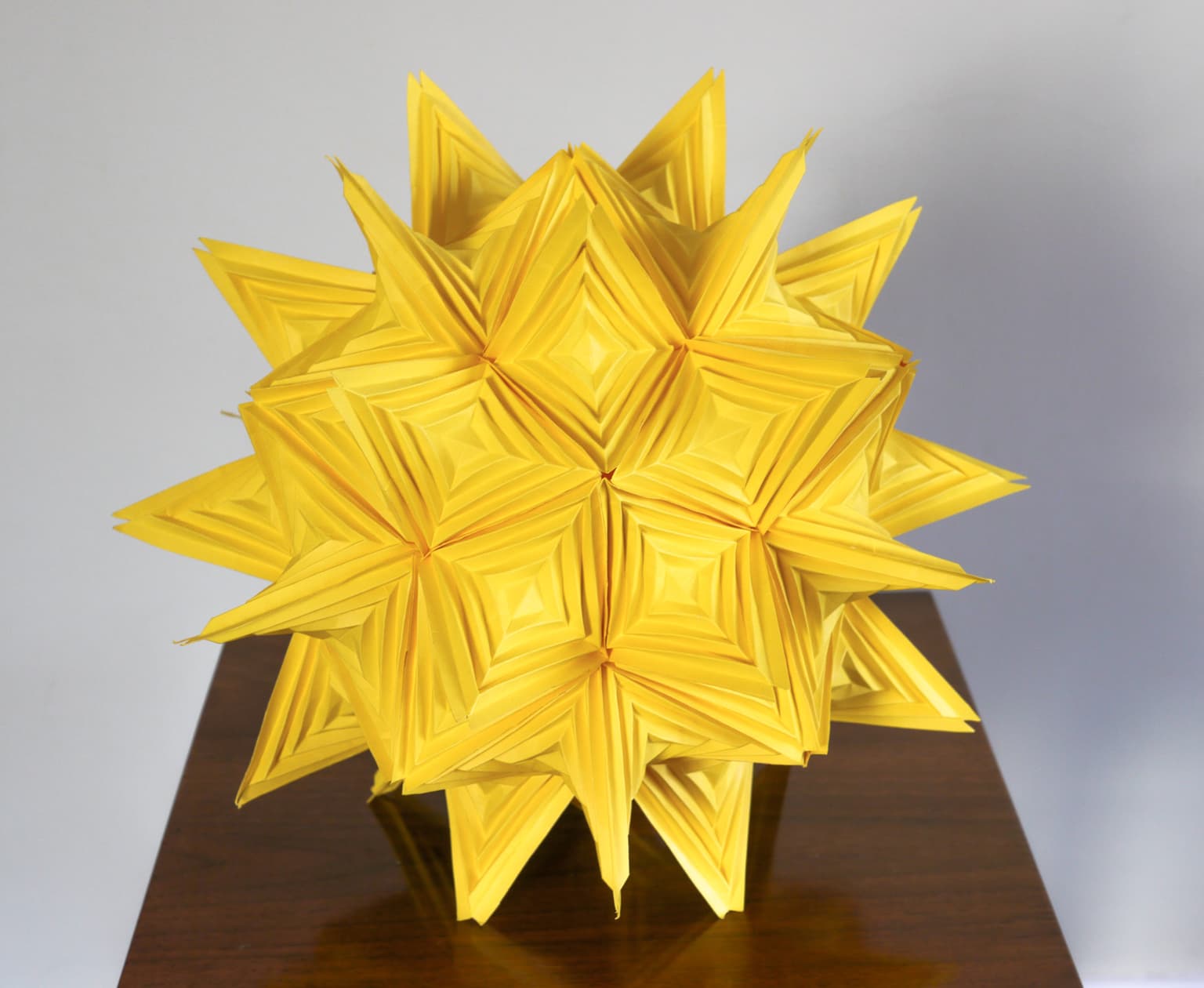Eve Torrence
Artists
Eve Torrence
Professor Emeritus of Mathematics
Randolph-Macon College
Ashland, Virginia, USA
Statement
I love the symmetric beauty of polyhedra and enjoy using paper to create models to study. Through the process of creating a model I am able to truly understand its structure. These two sculptures are formed in opposite ways and remind me of many diametrical pairs: sun - moon, day - night, out - in, man - woman.
Artworks

Night
26 x 26 x 26 cm
Cardstock
2015
"Night” is made from the same hypars in the same arrangement as "Day" but the points extend toward the center of the sculpture. This structure emphasizes the underlying rhombic triacontrahedron of both sculptures. Craters are reminiscent of the moon and stars emerge.

Day
32 x 32 x 32 cm
Cardstock
2015
In his 1999 Bridges paper, “Polyhedral Sculptures with Hyperbolic Paraboloids”, Eric Demaine describes how to make sculptures based on Platonic solids from hypars. Demaine’s method makes a beautiful “cube” because the edges of pairs of hypars lie on a rhombic dodecahedron. But hypars folded from squares cannot make a stable symmetric dodecahedron because they do not form rhombi with the correct ratio of the underlying rhombic triacontrahedron. By folding hypars from rhombi with the correct dimensions a stable symmetric “dodecahedron” is possible.
In “Day” the rhombic hypars are connected with all points facing outward as in Demaine’s design. The dodecahedral structure is easy to see and the result is a sun like sculpture.